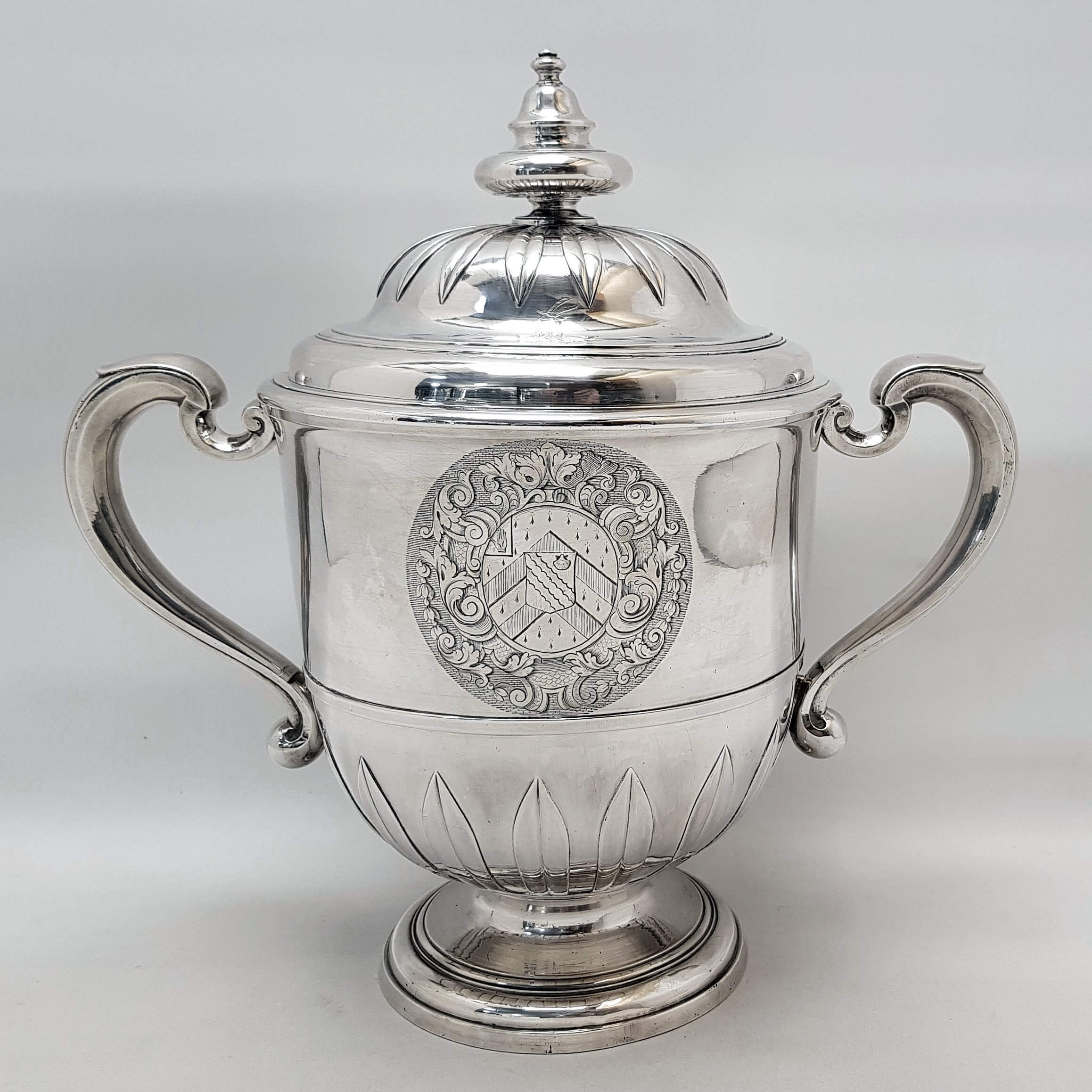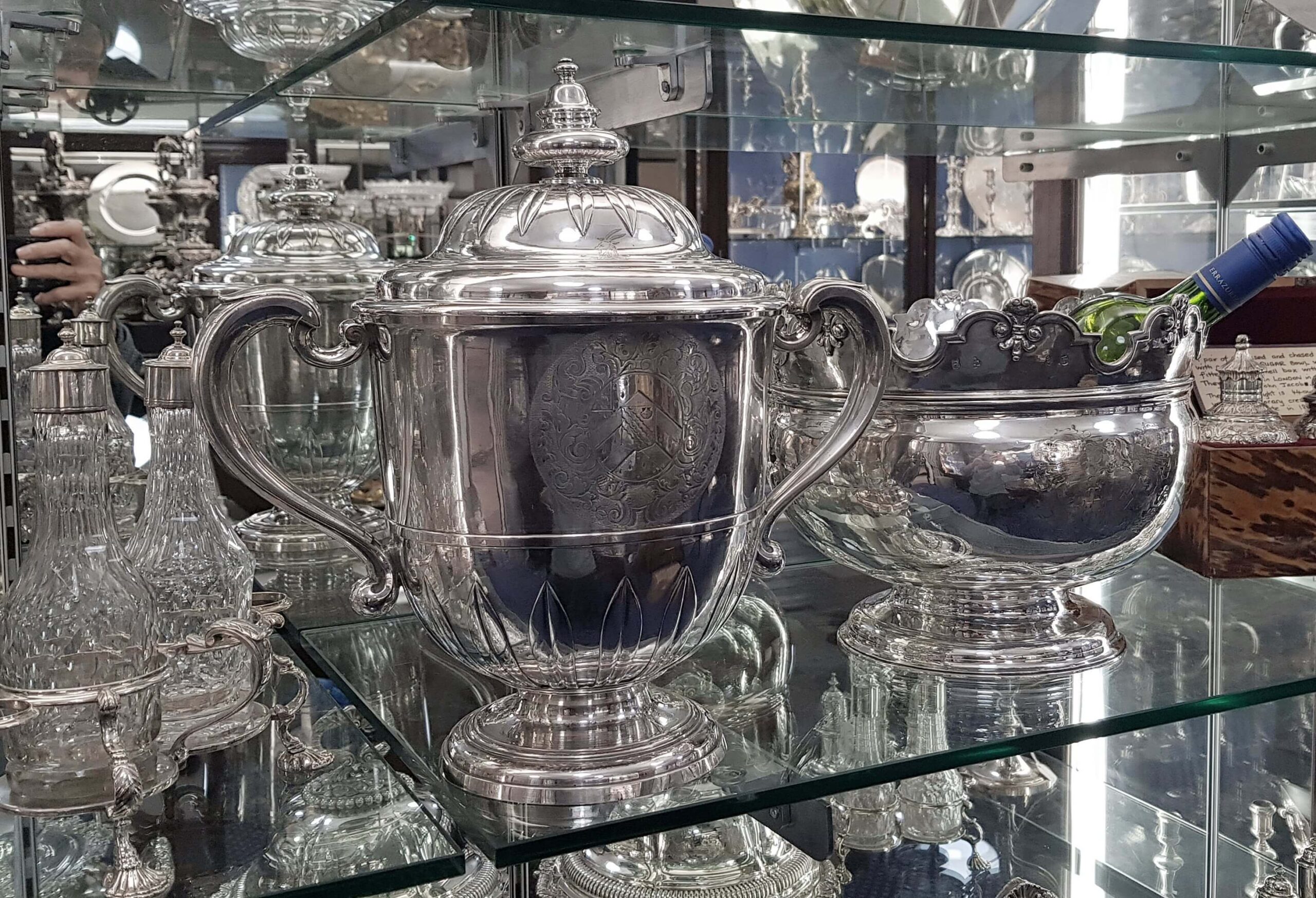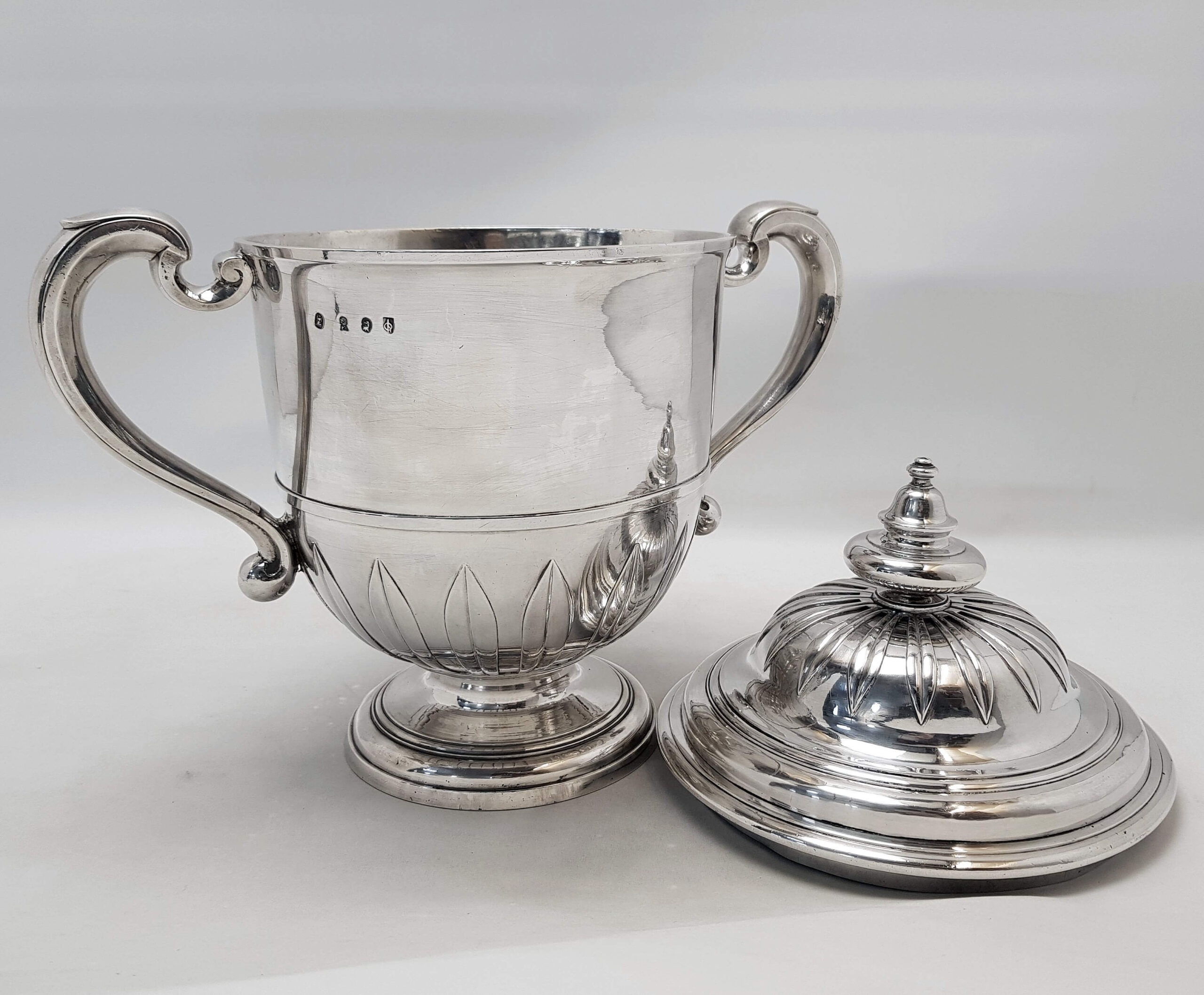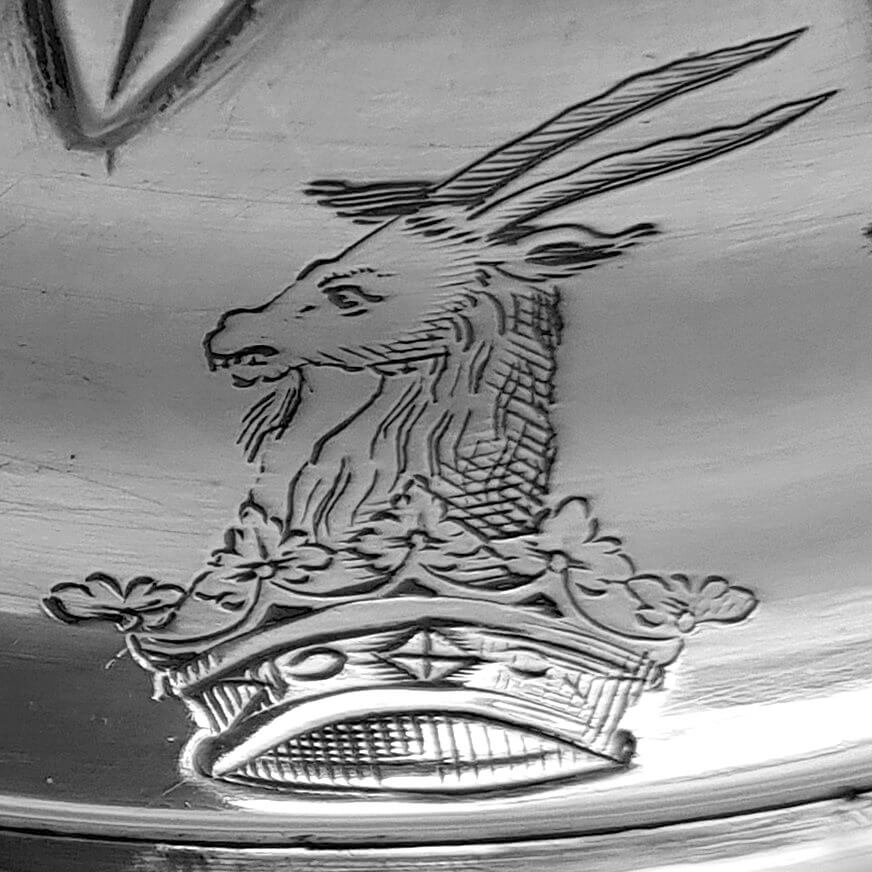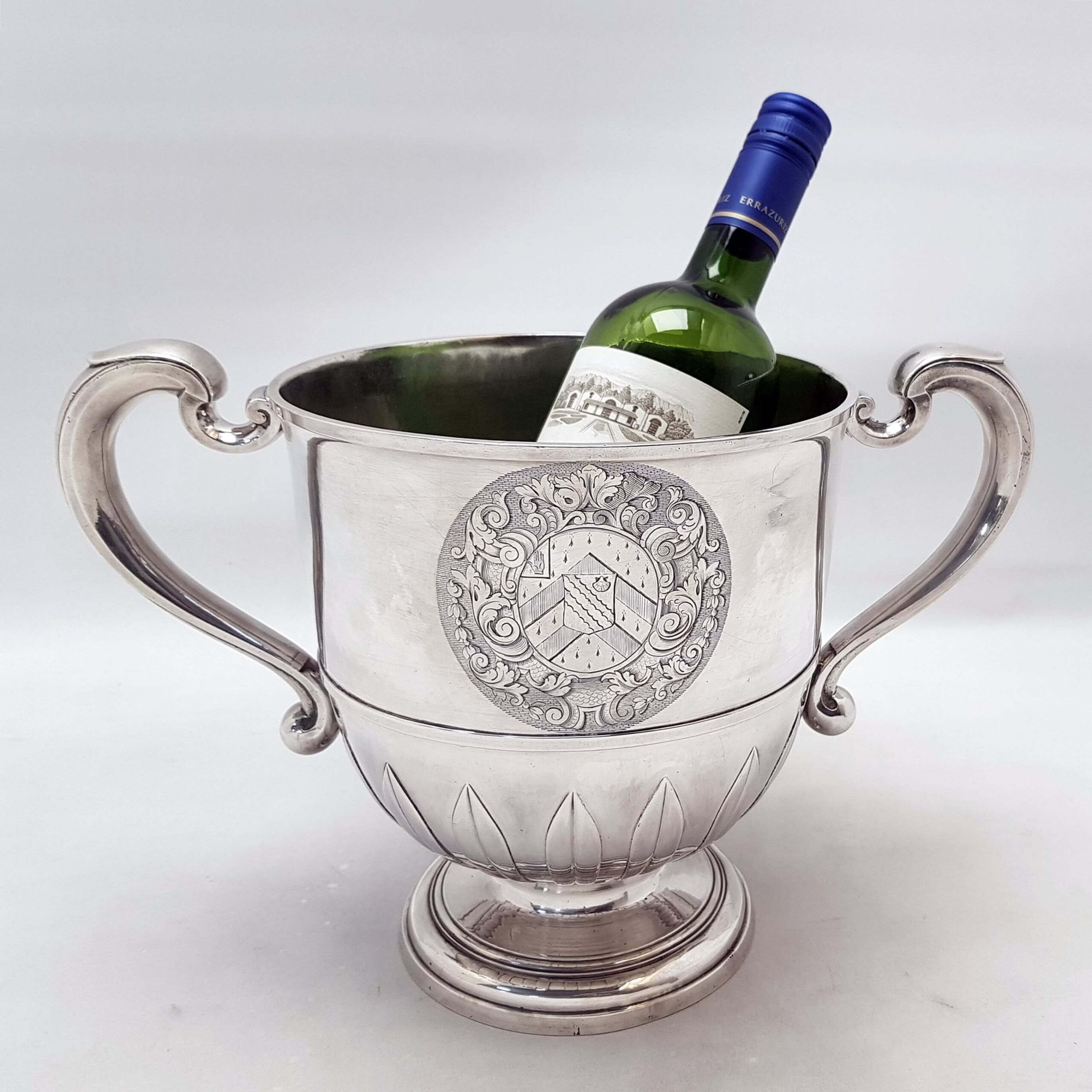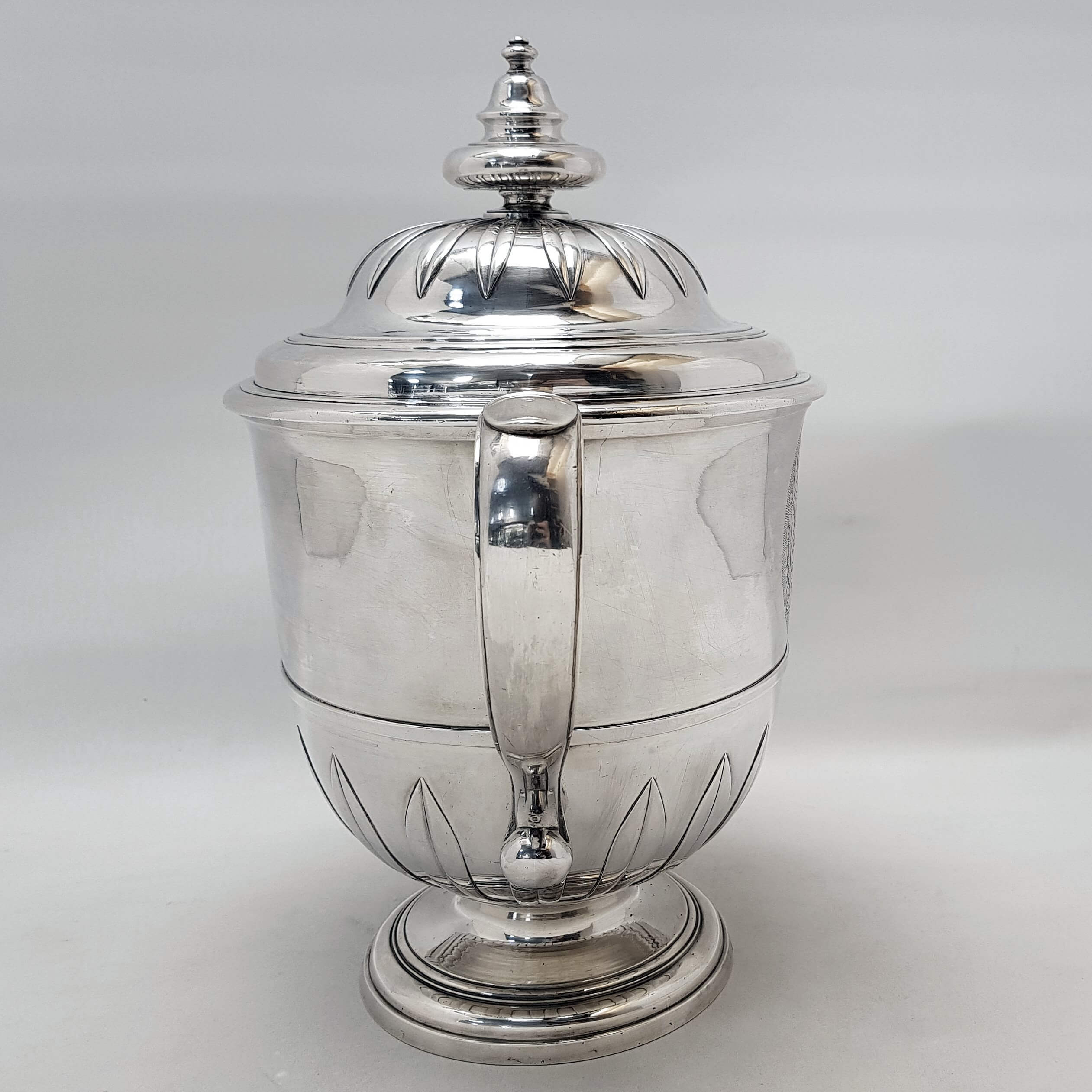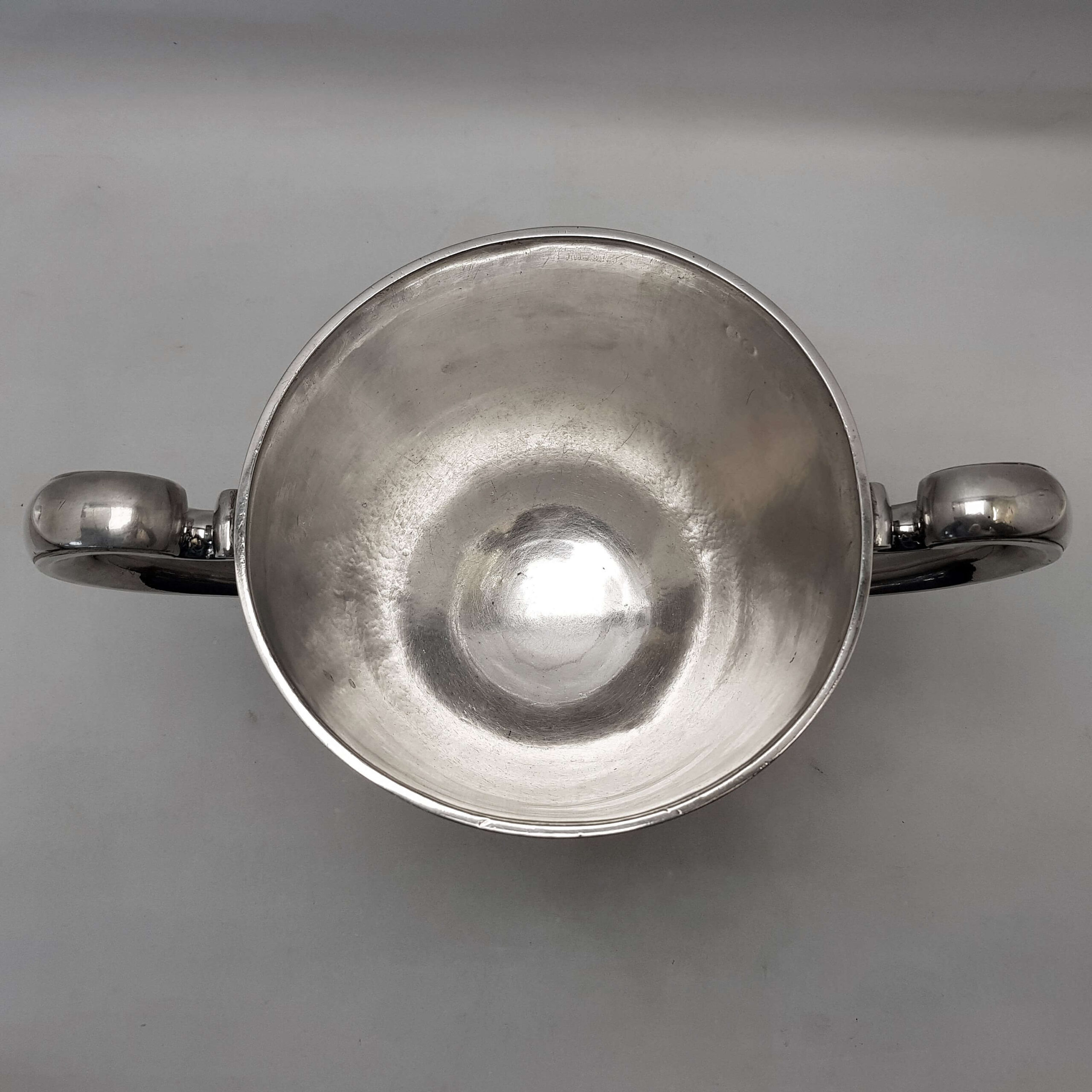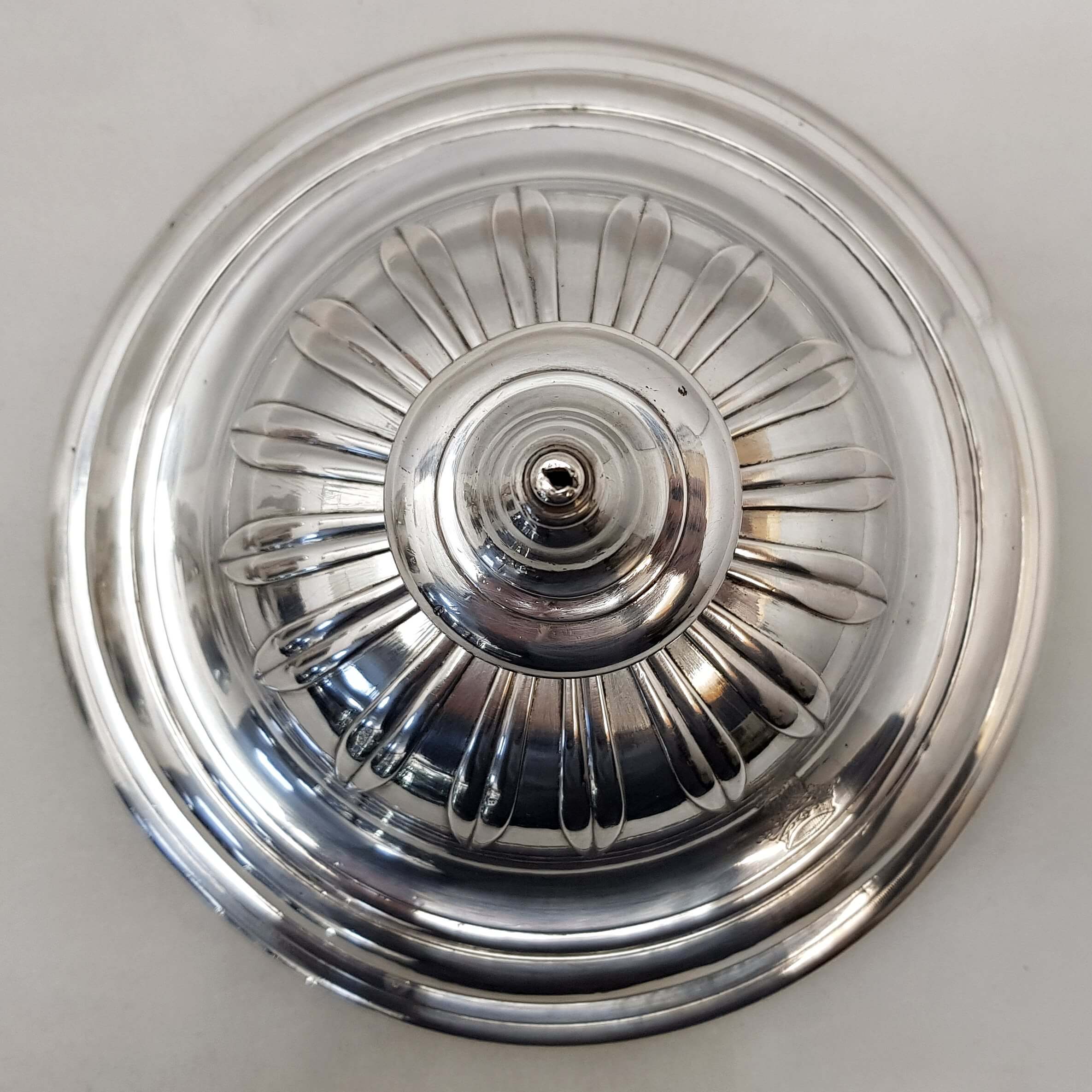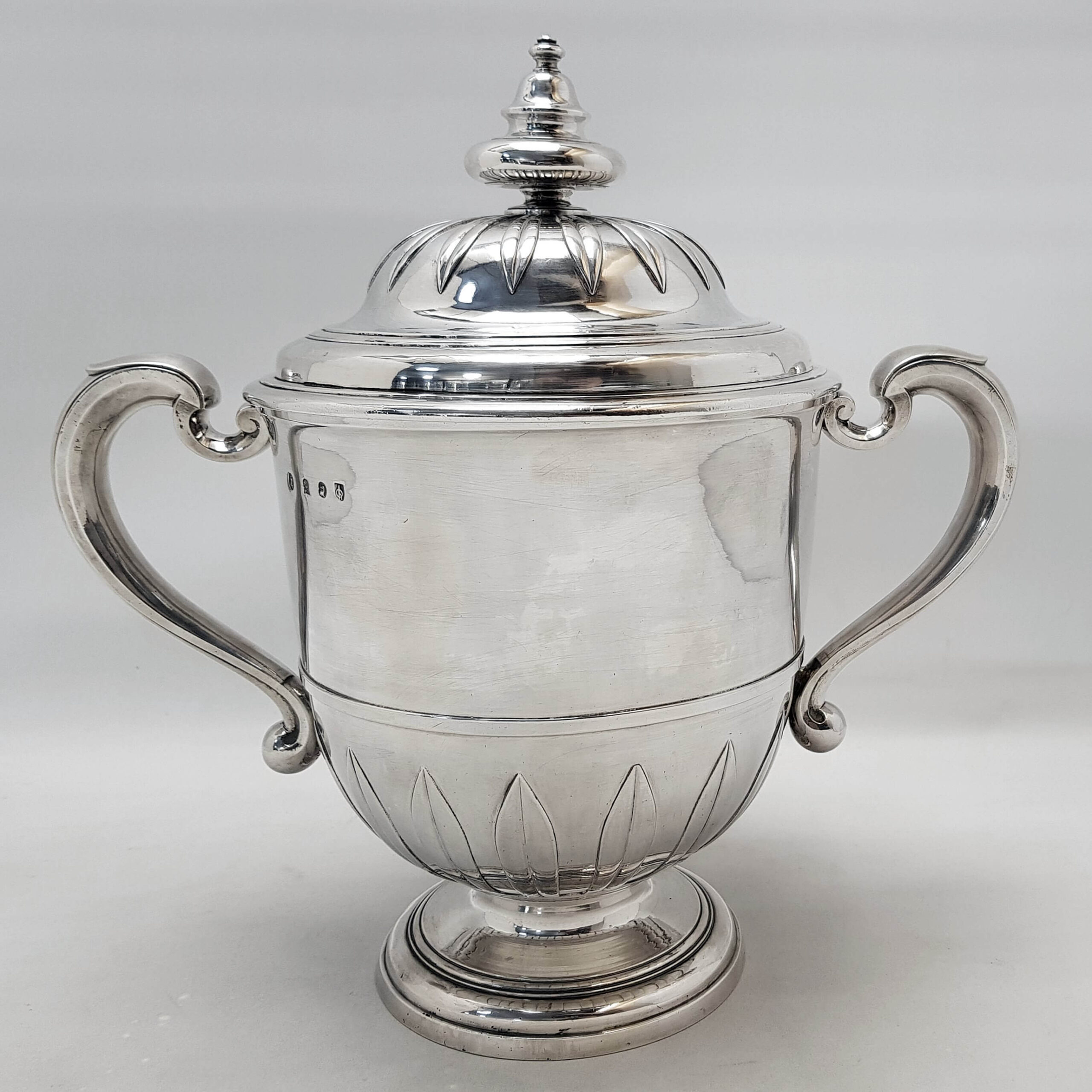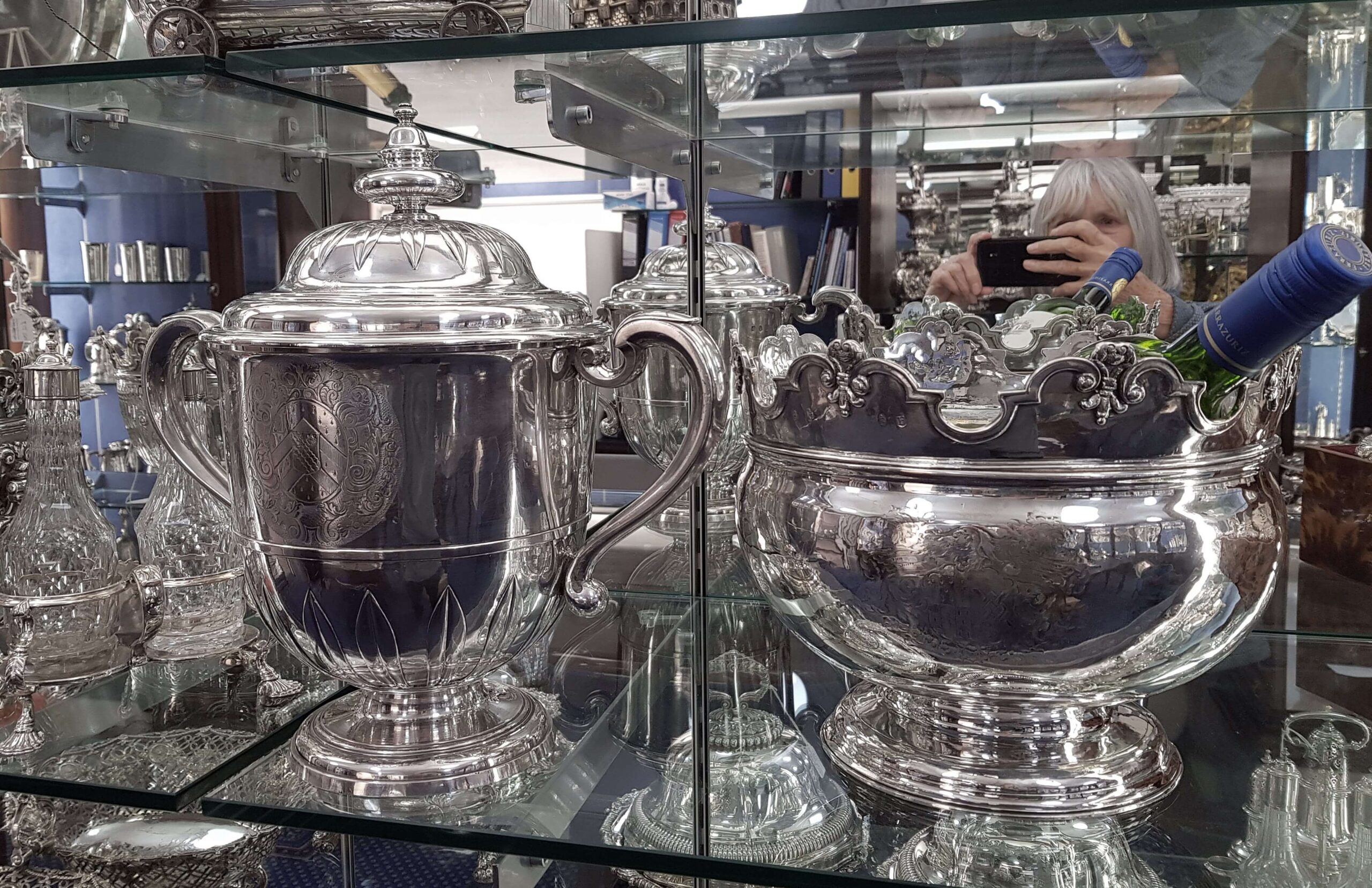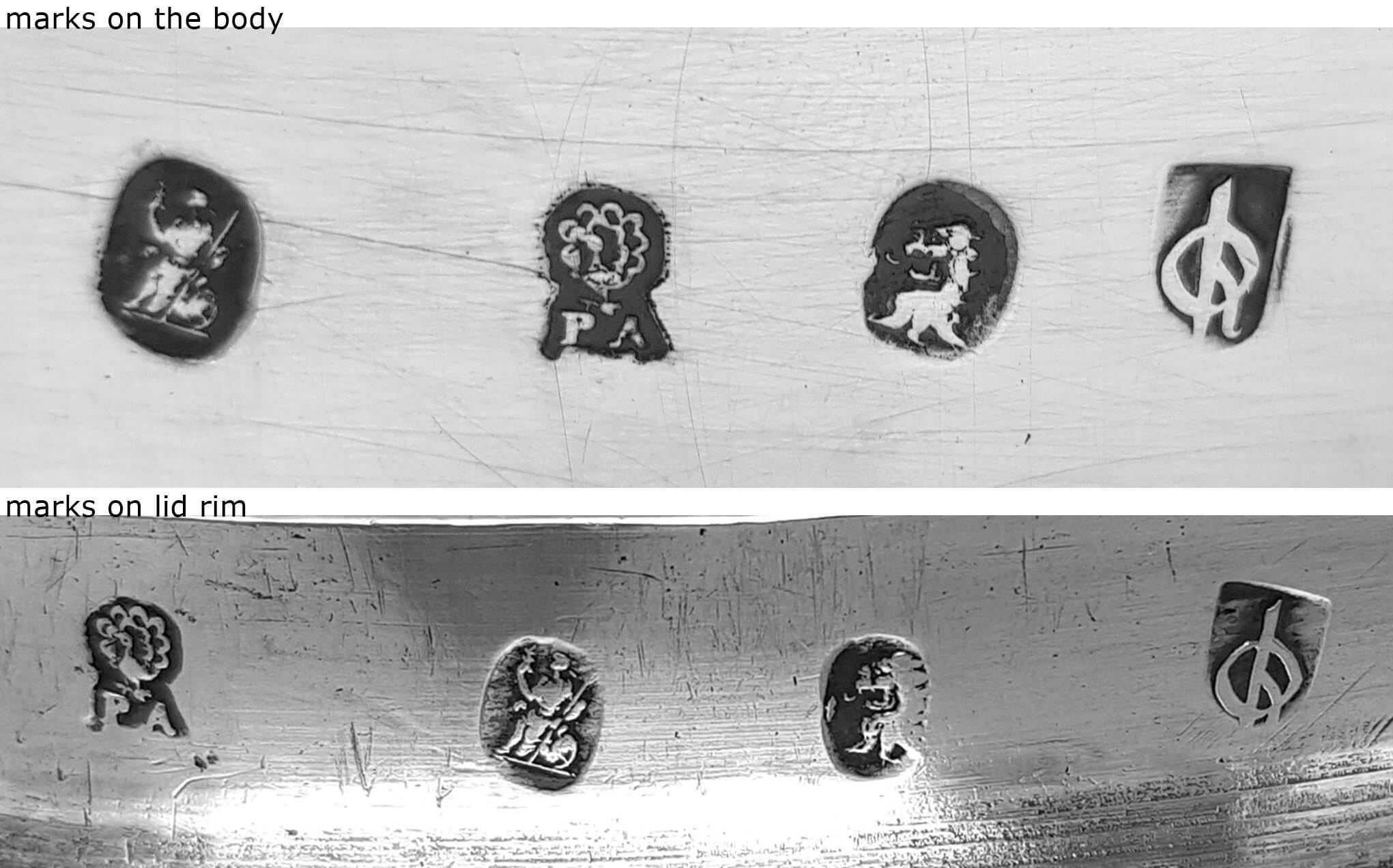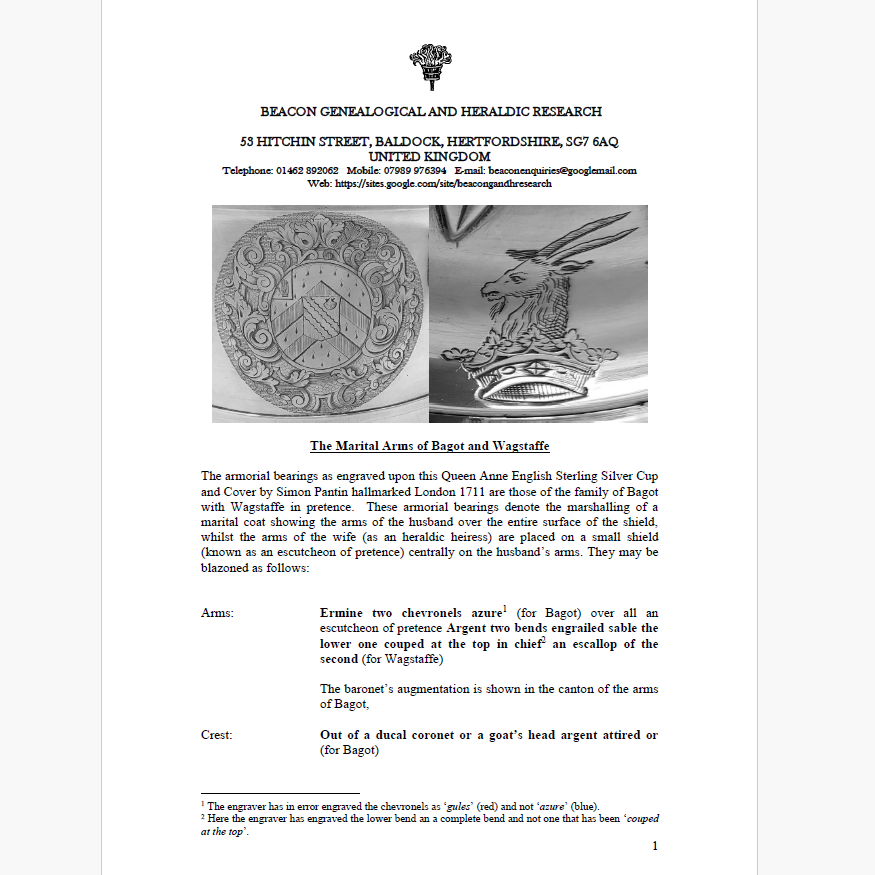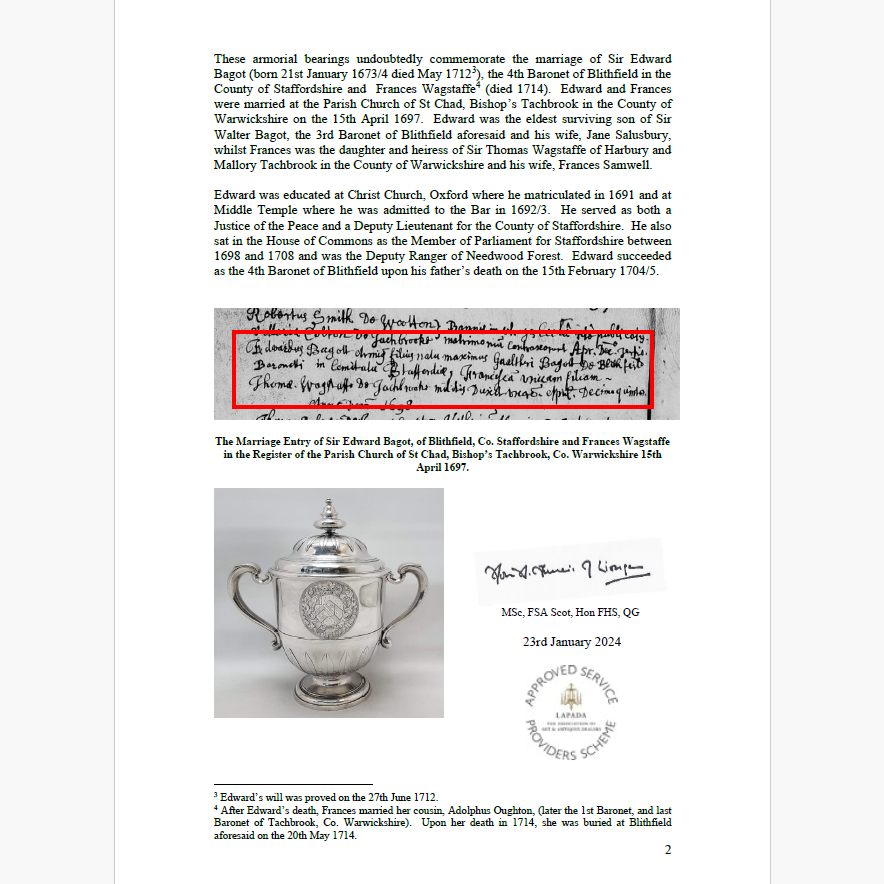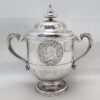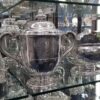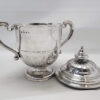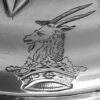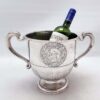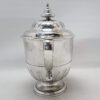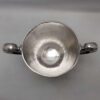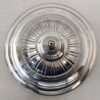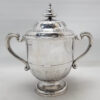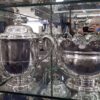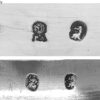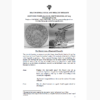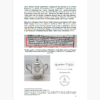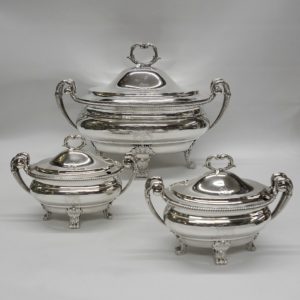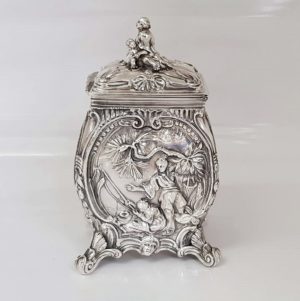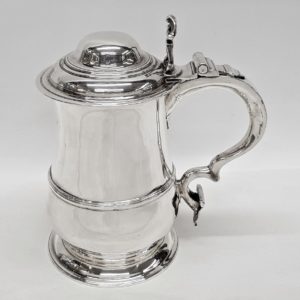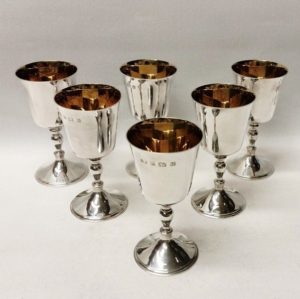Queen Anne Antique Silver Cup and Cover
SOLD
Stock: 10350
Date: 1711
Maker: Simon Pantin
Country: England
A magnificent antique silver cup and cover of campana form with twin side handles. Lovely plain style, very good weight...
Description
Description
A magnificent antique silver cup and cover of campana form with twin side handles. Lovely plain style, very good weight and large size. Excellent quality with the cut card banding typical of this sought after Huguenot maker. Engraved to the front is a large marital coat of arms for Bagot and Wagstaffe contained within a contemporary cartouche; the lid has a goat crest.
Total weight 2976g, 95.6 troy oz.
Height 32.5cm (to top of lid), 22.2cm (to top of cup rim). Spread across handles 33cm. Diameter of top 19.5cm.
London 1711.
Maker Simon Pantin.
Britannia standard silver.
Large enough to use as a 2 bottle wine cooler.
Marks. Stamped on the body and the top rim with a full and matching set of clear English silver hallmarks.
Arms. These armorial bearings commemorate the marriage (15th April 1697) of Sir Edward Bagot (born 21st January 1673/4 died May 1712/3), the 4th Baronet of Blithfield in the County of Staffordshire and Frances Wagstaffe (died 1714). Edward, eldest surviving son of Sir Walter Bagot, the 3rd Baronet of Blithfield served as both a Justice of the Peace and a Deputy Lieutenant for the County of Staffordshire. He also sat in the House of Commons as the Member of Parliament for Staffordshire between 1698 and 1708 and was the Deputy Ranger of Needwood Forest. More details available in the heraldry report attached to the images.
*Britannia Standard. In 1696, so extensive had become the melting and clipping of coinage that the silversmiths were forbidden to use the sterling standard for their wares, but had to use a new higher standard, 95.8 per cent. New hallmarks were ordered, “the figure of a woman commonly called Britannia” and the lion’s head erased (torn off at the neck) replacing the lion passant and the leopard’s head crowned. This continued until the old standard of 92.5 per cent was restored in 1720. Britannia standard silver still continues to be produced even today.
Condition
This heavy antique cup is in very good condition. The top fits snugly and the foot stands steady. Crisp engravings. Moderate signs of wear commensurate with age. The top rim is slightly not round. There is a small loss to the top finial.
Maker Information
Maker: Simon Pantin
Simon Pantin (1666-1733) came from a long line of Rouen goldsmiths dating back to the late 16th century when Jacob Pantin, Simon’s great-great grandfather first entered the distinctive peacock maker’s mark which continued to be used by successive generations of the Pantin family. Simon came to England in the early 1680’s as a refugee when his family fled the Huguenot persecution in France. The Pantins settled within the Rouen protestant community in London where they already had existing family members. Simon’s father had been a practising goldsmith in France and his son Simon was apprenticed to the prestigious Pierre Harache, also from Rouen, in 1686. Freed from his apprenticeship in 1693, aged 27, Simon finally obtained his freedom of the Goldsmith’s Company in 1701 and entered his first mark (Britannia Standard) 3 weeks later giving an address in St Martins Lane. Simon subsequently moved nearby to Castle St at “the sign of the peacock” in 1706 where he remained until his death in 1733. 2nd mark 1717, 3rd mark (Sterling) 1720. All marks incorporated the Pantin trademark “peacock”. Livery, October 1712. Simon married (date unknown) Marthe de Joncourt, a Huguenot refugee from Saint-Quentin in France and they had at least 7 children of whom 3 died young and 3 became goldsmiths – Elizabeth (Eliza Godfrey), Simon II and Lewis Pantin. Simon took 9 apprentices, all Huguenot, including Augustin Courtauld, Peter Courtauld, Abraham Buteux (his nephew and godson) and Simon Pantin II (his son). Simon Pantin’s extensive work includes many fine specimens on display in museums and institutions worldwide including the beautiful tureen in the Hermitage Museum, St Petersburg and the 1724 “Bowes” tea set in the Metropolitan Museum, New York. His expert technique, elegant style and minimal use of decoration was ideally suited to his main output of domestic teawares (tea canisters, teapots and kettles) and expertly cast candlesticks. biography extracted from Sandra Robinson's "Simon Pantin & His Children"
Our Guarantee
Customer satisfaction is our primary concern
All silverware on our website is checked thoroughly prior to offering it for sale and every product listing contains a condition report and details of the silver hallmarks.
All items offered on our website include:
- Free Shipping Worldwide
- Tracked and Insured
- 14 day no quibble money back guarantee
- We are accredited members of LAPADA and conform to their strict professional standards
- We dispatch 1-3 days after receiving cleared payments
More detailed information about deliveries, returns and how to pay is available in the Help section at the bottom of this page.
